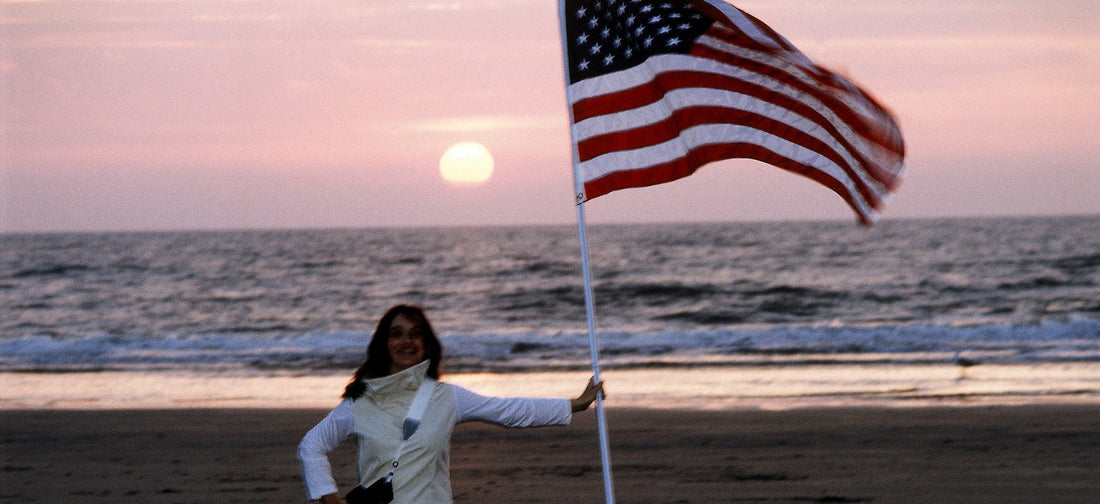Examining a range of artworks of women by women in their new book Madam & Eve, Liz Rideal and Kathleen Soriano investigate the impact of the feminist movement of the 1970s on the development of contemporary art.
As the authors note in their introduction, “This seems especially relevant at a time when museums and galleries, curators and art historians are re-considering, re-positioning and revealing anew the presence of women artists in their collections after centuries of relegation.”
Published 50 years after the unfurling of a ‘Women’s Liberation’ protest banner by the feminist group New York Radical Women at the 1968 Miss America pageant, Madam & Eve aims to celebrate the work of many women artists since that time. The authors note that the book acknowledges a debt to the significant feminist art-historical theory of the last half-century, but is primarily a visual celebration, with a western focus, that reflects their own experiences and encounters.
By choosing artists from the late twentieth and early twenty-first centuries who might be less familiar, the authors have attempted to broaden the canon. “Our wide selection of works suggests a remarkably fluid, globalized art world in which artists share some common interests and forms of cultural exchange,” they state. “Our intention is to provide a range of work rather than to create a hierarchy of women artists in conflict with male-dominated art history.” The five artists below are featured across the universal themes of the book – body, life, death, stories and icons – amongst a collection of compelling work by over 200 artists. As the authors are keen to point out: “We hope that the book will appeal to a broad range of readers, whatever their gender.”
Jill Magid

The debate around clothing and the nude or naked body could be seen to constitute a cornerstone of the feminist discourse. The formidable and iconic Queen Elizabeth I declared that she may not have had the body of a man but that she did possess the mind of one, and the nineteenth-century painter and sculptor Marie Bashkirtseff similarly announced that ‘There’s nothing of the woman about me but the envelope’.
Jill Magid’s (1973–) Surveillance Shoe pushes the ‘envelope’ further. Her witty six-minute video fulfils any voyeur’s ultimate fantasy while simultaneously performing as a ‘self-portrait-Peeping Tom’, and referencing the trend for using mobile phone cameras to take unsolicited photographs. The camera sits underneath, while the surprising view is straight up and crotch-wards. The issue here (and with Magid’s work) is the fine line: when does the protest work cease to be titilatory, and if it doesn’t, how do we mediate our response?
Jessica Lagunas

Lips also feature prominently in Jessica Lagunas’ (1971–) video performance, in which she makes much of the basic ritualistic application of lipstick or mascara. These exaggerated actions suggest the pressures imposed on women by today’s societies. Lipstick itself has an interesting history. During Roman times, it signified an elevated social status and was worn by men and women. In 1650 the British parliament tried to ban it, calling it the ‘vice of painting’, and Winston Churchill famously refused to ration lipstick in wartime Britain, for reasons of ‘morale’. Describing the work, Lagunas has said, ‘The camera focuses on the part of the body where the action takes place: With repetitive gestures – for one or two hours continuously – I apply make-up, questioning its power of seduction, or I depilate my pubis questioning the pressure to have a pre-pubescent appearance.’10 Her work looks at the condition of women, questioning our obsessions with body image, beauty, sexuality and ageing. The title of the work makes reference to the fairytale Little Red Riding Hood, long burdened with sexual undertones and perversity.
Amalia Ulman

In commenting on imagined identities in her fabricated autobiography entitled Excellences & Perfections, Amalia Ulman (1989–) writes, ‘It’s more than a satire. I wanted to prove that femininity is a construction, and not something biological or inherent to any woman. Women understood the performance much faster than men. They were like, we get it and it’s very funny. What was the joke? The joke was admitting how much work goes into being a woman and how being a woman is not a natural thing. It’s something you learn.’4 The series of 175 photographs, issued through Instagram and Facebook social media accounts, featured her pole-dancing classes or discussed her planned breast augmentation, and drew outrage from some in the art world, appalled that she should be damaging her position as an artist by succumbing so easily to the vacuous and narcissistic concerns of contemporary culture. Ulman remained in character for the full five months of the series, only revealing that it had been a complete fabrication in her final post, accompanied by the text ‘The End’, by which time she had acquired nearly 90,000 followers.
Aleksandra Mir

Aleksandra Mir (1967–) is also concerned with lost history and the potential achievements of women. In First Woman on the Moon she creates a new story, using as a springboard the historical reality of astronauts Neil Armstrong and Buzz Aldrin’s space journey in 1969. Mir recreated a moon landing on the Dutch coast at Wijk aan Zee, using bulldozers to move sand into (and
out of) place for one day only, 28 August 1999, when the land-art-cum-performance made the local TV news. The documentation of the project includes a letter from Neil Armstrong’s office thanking them for the videotape that Mir had sent, accompanied by the words, ‘He is looking forward to the opportunity to view it’.
Susie MacMurray

In the sculpture Widow, Susie MacMurray (1959–) has created a memento mori following the death of her husband in 2006, but rather than recording his presence or absence, she has created a shroud-like work that reveals her own experience of a profoundly disabling event in her life. The exercise of pushing over 100,000 (roughly 43 kilograms) of adamantine dressmakers’ pins through the black leather skin was itself a torture and a meditative homage. The pins face outwards, making the work appear like a protective armoured dress, but it was meant, rather, to reflect the rawness of MacMurray’s emotions. She says that for long time after her husband’s death she felt physically sore and overly sensitive to touch, as if her skin had been turned inside out. This tension between armour and vulnerability is echoed in the sparkly, seductive, fur-like nature of the object, which on closer inspection repels and gives a spiky rebuff.

